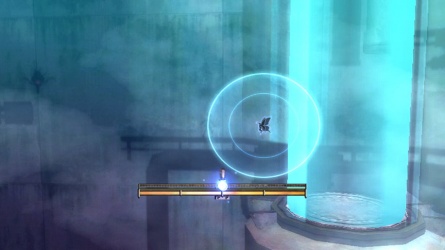Shortly after I returned from E3, fresh with a lengthy list of games—many ominously targeted for "Holiday 2010"—that I had good feelings about, I thought it would be good to get into my favorite game from the show a little more in-depth. The man I wanted to get in touch with was clear: Osamu Tsuchihashi, director of that game—Lost in Shadow—who I'd previously chatted a bit with over Marble Saga Kororinpa.

Mr. Tsuchihashi was a delight and very gracious, providing several very interesting insights into the game and its creation process. I really enjoyed hearing his answers, and I hope you will too—and maybe understand a little more about Lost in Shadow in the process.



Mr. Tsuchihashi was a delight and very gracious, providing several very interesting insights into the game and its creation process. I really enjoyed hearing his answers, and I hope you will too—and maybe understand a little more about Lost in Shadow in the process.
Thank you for taking the time to talk with us today. We last spoke about Marble Saga Kororinpa, which I enjoyed quite a bit.
When I saw the first information about Lost in Shadow last year, I wondered if perhaps you and your team were behind it, and then I found out that you are! I was very pleased to hear that, and now that I have had the time to play the game, I walked away thinking it was the best I played all week at E3.
When I saw the first information about Lost in Shadow last year, I wondered if perhaps you and your team were behind it, and then I found out that you are! I was very pleased to hear that, and now that I have had the time to play the game, I walked away thinking it was the best I played all week at E3.
We are already familiar with the Kororinpa series, of course, but what other games have you and your team worked on in the past that we might be familiar with?

Okay, so, on to the main topic: Lost in Shadow. First, for our readers that may not be familiar with the game, can you explain the basic premise, and maybe a little of the story?
Where did the idea for the game come from?

Having seen so many ways to use light and shadow in gameplay, I imagine that the game engine is quite unique. Did you have to create an engine specifically for this game? Was it a challenge?